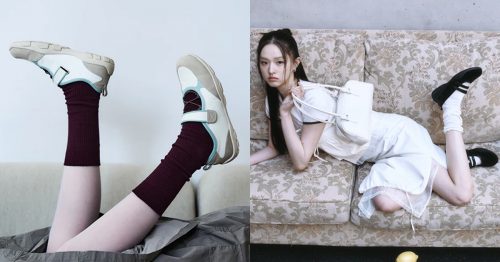At the end of 2020, the Samsung Fashion Institute (SFI) suggested that the fashion industry in 2021 would require a “rescue” to recover from the first year of COVID-19. In retrospect, the SFI has observed great resilience in fashion last year.
Reviewing the resilience of fashion in 2021
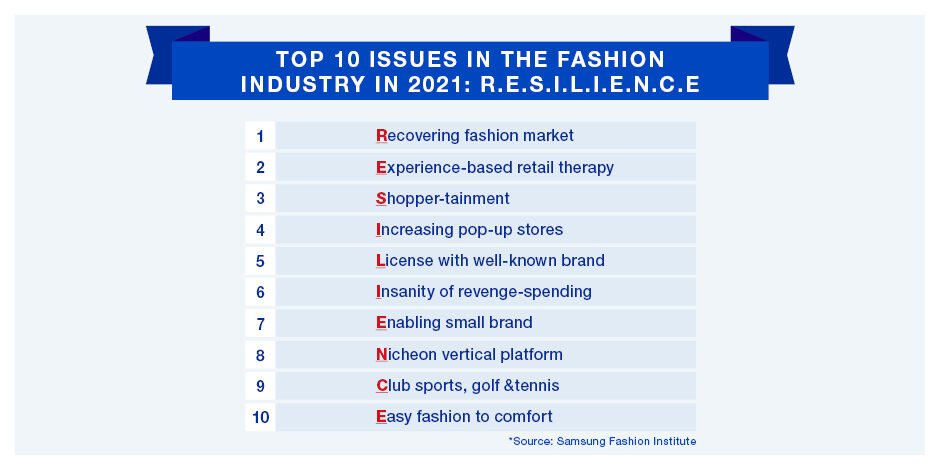
RESILIENCE – Recovering fashion market
Despite the prolonged COVID-19 situation, in 2021 the fashion market showed a much-hoped-for recovery phase thanks to a rebound of consumer sentiment. Luxury sales are showing particular growth, giving a boost to the department store sector. This helped the fashion industry, especially in the second half of the year, with the month October showing a 13% year-on-year increase in sales.
RESILIENCE – Experience-based retail therapy
Retail spaces are being reborn to fulfill consumer demand for “experience consumption.” Stores that merely sell products are passe, whereas those with spas, rest areas, and cultural spaces are providing a richer shopping experience to customers. The Bamford Store and Spa opened in early 2021 by Samsung C&T Fashion Group is a great example.
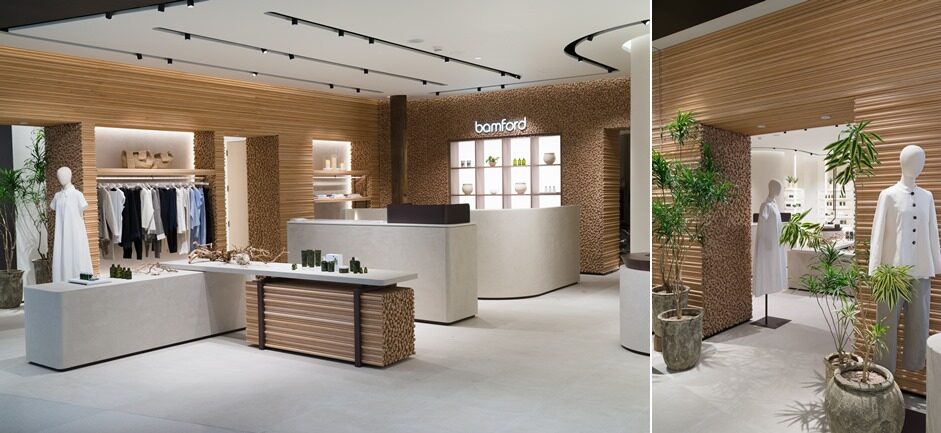
The Bamford Spa offers experience-based retail therapy to weary shoppers.
RESILIENCE – Shopper-tainment
Dovetailing with that is the desire to make the shopping experience more enjoyable, whether online or offline. Content commerce is growing, where brands seek to produce content that is entertaining as well as informative. In order to make customers’ journeys more enjoyable, Samsung C&T Fashion Group launched its Se-sa-fe TV midway through the year.
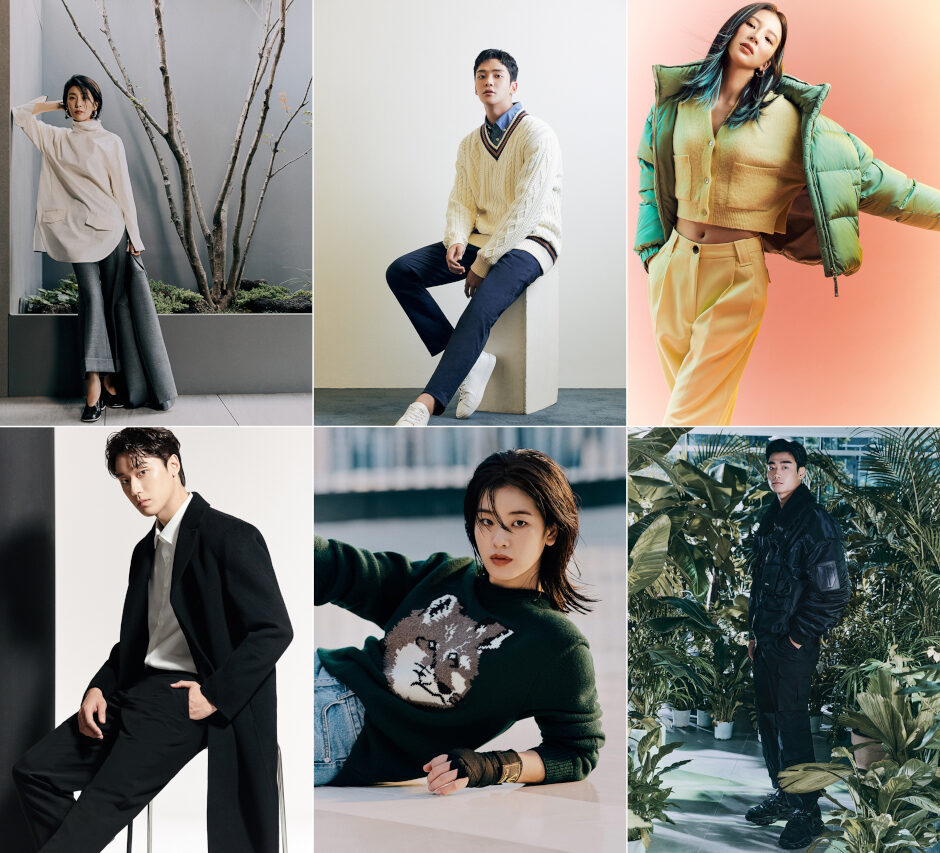
Models in Se-sa-fe campaign commercials
RESILIENCE – Increasing pop-up stores
Short-term pop-up stores can be found more easily in department stores nowadays. The goal of setting up these types of stores is to make the store itself a direct brand advertisement. It provides a delightful customer experience as well as the joy of discovering new products, thus creating a ‘wow’ effect.
RESILIENCE – License with well-known brands
Older brands whose heyday is in the past are enjoying a rebirth under licenses. The number of such brands having a comeback with a re-launch is on the rise, reaching towards younger generations.
RESILIENCE – Insanity of revenge-spending
Revenge-spending is one name for the flurry of consumers opening their purses to treat themselves on new clothing after a long period of social distancing and working from home. It is particularly luxury goods that are benefiting from this consumption insanity. Not just traditional ones, but also the “new luxury brands” favored by Millennials and Generation Z are performing well.
RESILIENCE – Enabling small brands
Small-sized brands are growing thanks to the online shopping platforms that introduce them to a newer and wider range of audiences. In addition, large players acquiring new rising stars are adding more power to the smaller labels.
RESILIENCE – Niche on vertical platform
Meanwhile, newly launched platforms are targeting niche markets by finding unexplored areas rather than competing against existing strong players. For example, platforms dedicated to the fashion brands for middle-aged women in their 40s and 50s are newly entering the market.
RESILIENCE – Club sports, golf & tennis
The last year has seen increasing popularity of golf and tennis as sports that can be played without close contact with others. Millennials and Generation Z are taking up these club pastimes faster than ever, which has led to growing passion for golf and tennis wear.
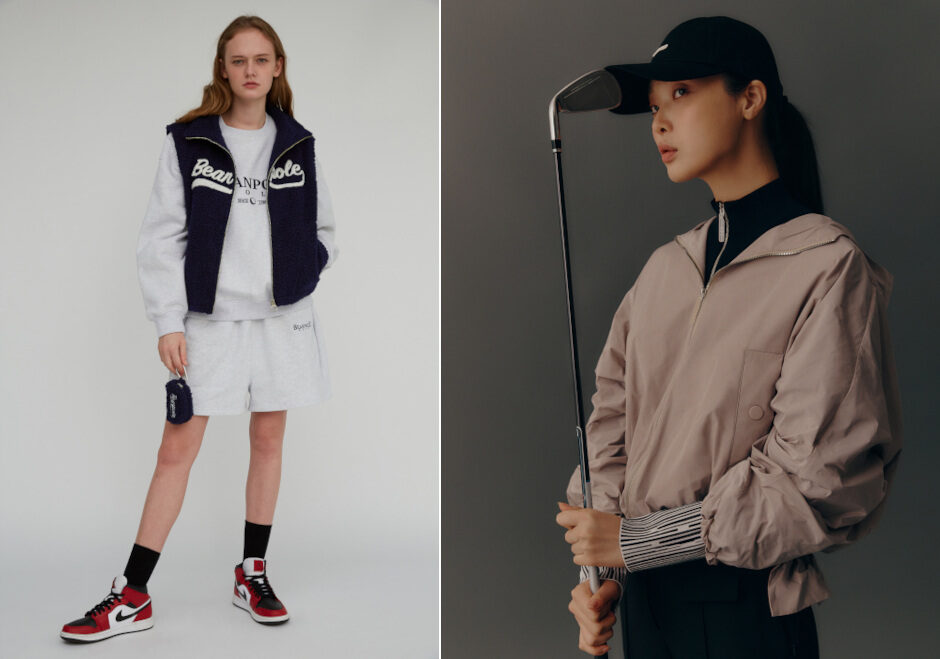
Part of Beanpole and KUHO’s golfwear range
RESILIENCE – Easy fashion to comfort
The first year of COVID-19 saw comfort and ease as the most important factors in dressing, while in 2021 we also witnessed a renewed interest in more sophisticated outfits that can be worn at rest, at work, or when going out. Relaxed over-fitted items, loose silhouettes, and stretchy and wearable knitwear particularly stood out.
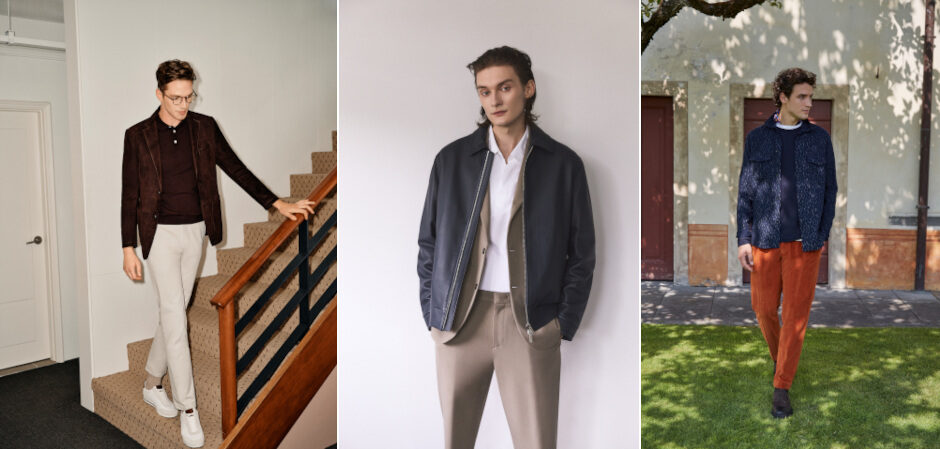
Galaxy, MVIO and Slowear have added luxury to comfort and practicality.
2022 Fashion Market Keyword: A TEMPO
It is time to look ahead. Rather than asking which direction fashion will proceed, it might be better, given the last two years, to wonder at what speed.
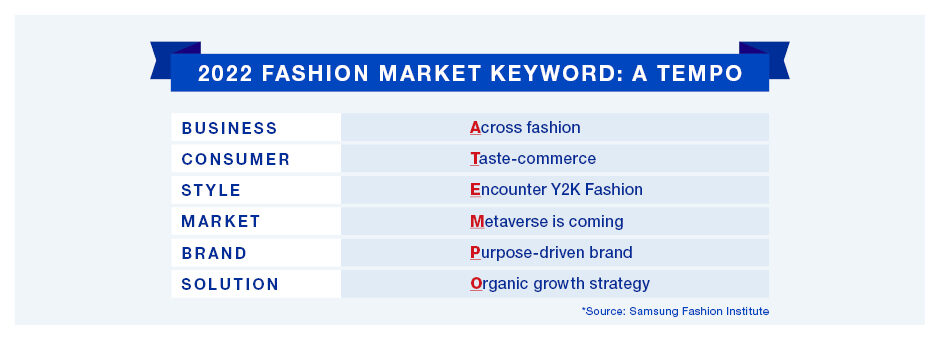
Samsung Fashion Institute Director Lim Ji-yeon says, “Although the fashion market has entered a recovery phase, we cannot expect the rapid growth or change that we saw before COVID-19,” adding, “It is now time to pedal as hard as we can to return to the market conditions of 2019. That is why to signify 2022 we selected the musical term ‘A TEMPO,’ meaning to return to the previous speed.”
Business / A TEMPO – Across the Fashion
Even in the event of a complete disappearance of COVID-19, it is hard to imagine a full recovery in the fashion market’s size. Consumer interests have broadened to lifestyle areas, which will push more fashion brands to try out new business areas to offer differentiated brand experiences to their customers. One example seen recently is fashion brands entering the hospitality space, opening restaurants and cafes.
Consumer / A TEMPO – Taste-commerce
Nowadays, consumers only open their wallets to spend when they find something that perfectly meets their tastes. Social media influencers are sharing their individual tastes and sometimes turning them into their own businesses. This leads to more personalized strategies in the fashion market with an emphasis on curation according to taste.
Style / A TEMPO – Encounter Y2K Fashion
Going back to the turn of the Millennium, Y2K fashion has reappeared, marking a return to body-hugging silhouettes and playfully revealing cut-out sections. This shift towards colorful and bold outfits could be a reaction to the long trend of work-from-home fashion. Tailoring has reemerged, too, as have colorful and floral motifs, heralding more spectacular looks for 2022.
Market / A TEMPO – Metaverse is coming
The emerging metaverse is a new growth engine for the industry. When Gucci partnered with Roblox to create a digital Gucci Garden selling digital handbags and other intangible products, it woke the world up to the potential of fashion-themed non-fungible tokens (NFTs). This phenomenon will only grow and diversify in 2022.
Brand / A TEMPO – Purpose-Driven Brand
More fashion brands will seek to create a deeper connection with people than just selling. Purpose-driven brands are learning that they can attract savvy modern consumers when they have their own philosophy and mission in line with diversity or sustainability. This is the road to build a trusted brand in consumers’ minds.
Solution / A TEMPO – Organic Growth Strategy
Fashion businesses will need to develop organic strategies for growth. The recent years of low growth have made it tempting to grow inorganically through mergers and acquisitions, but organic growth is the best way to strengthen the value chain while not diluting the brand.


